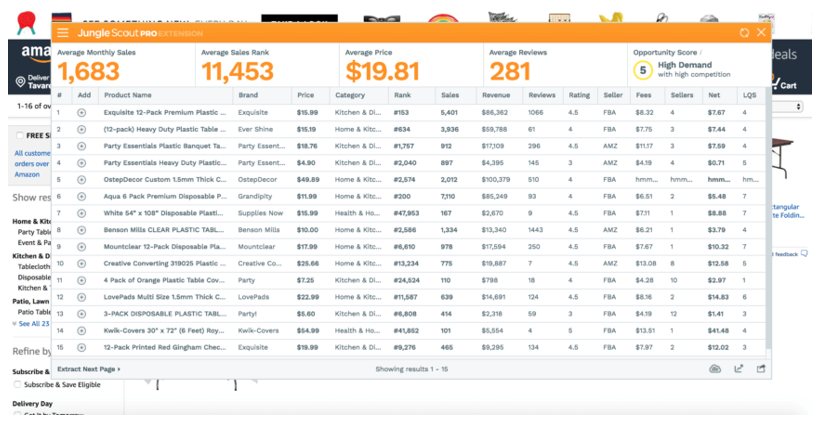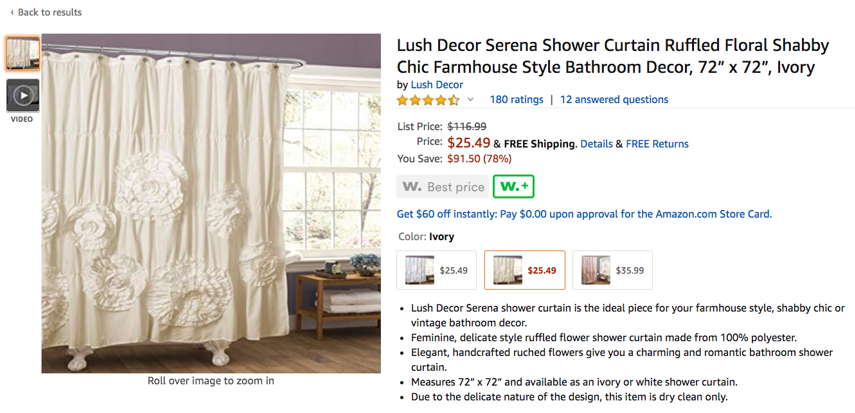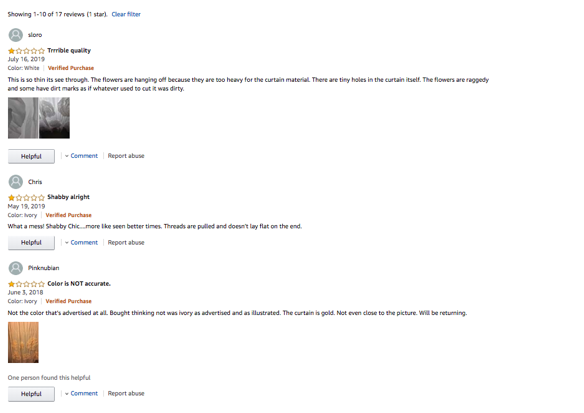The Ultimate Guide to Amazon FBA Product Research
Ask any seasoned Amazon seller what it takes to be successful, and you’re likely to hear these two rules:
- Sell products with high demand and low competition.
- Make sure you accurately account for your product costs, FBA fees, and marketing costs when determining profitability.
The Amazon marketplace is a potential goldmine. Virtually anyone can sell on the platform, and sourcing products is easier than it was even just five years ago. Amazon dominates e-commerce (accounting for about 49% of the sales in the US), but the low barriers to entry have made the competition fierce.
If you don’t know what you’re doing, you could end up like the 37.6% of first-time Amazon sellers that lose money on their first product. However, if you plan your strategy before buying 100 (or 1,000) units of something, you can achieve success no matter how many products you launch.
This guide will tell you everything you know about doing product research for Amazon FBA, from the principles you should follow to the tools (both free and paid) that you can use to ensure your success. We’ll give you a systemized process to aid you in evaluating products and niches so that you can find lucrative opportunities, make the right decisions, and avoid costly mistakes.
Here’s to your financial freedom!
What is FBA?
First, what the heck is FBA and why should you sell on Amazon this way? Skip to the next section if you already know the answer, or stick around if you need a refresher.
FBA is an abbreviation for Fulfilled By Amazon. What this means is that you ship all of your items to Amazon’s warehouse, and then the Amazon worker bees ship your goods to the customer. Each product is assigned an ASIN (Amazon Standard Identification Number) which allows them to take care care of the packaging, shipping, and customer service.
Product sourcing is the most work-intensive part of selling on Amazon. Once you source your products and arrange for shipment to Amazon’s warehouse, most of your work is done. Other than running PPC campaigns and replenishing stock, your income becomes passive.
Compare this to having to store cases of items in your garage or in a rented warehouse, employing staff to fulfill each order, and then paying a customer service team to handle inquiries and returns, and you can see why an FBA business has become the preferred method of selling on Amazon!
Four Ways to Sell with FBA
The next step is choosing your business model. There are pros and cons to each. If you decide to go the retail arbitrage route, the FBA product research process is simplified. However, if you use one of the other three ways to sell on Amazon, then this guide is for you.
1. Retail Arbitrage
How it works: This method is the epitome of “buy low, sell high.” Retail arbitrage involves buying clearance items or underpriced goods in a retail store or online and then selling them for a higher price on Amazon.
To determine your potential profits, you can use a scanner app on your smartphone (Amazon has its own that’s easy to use) to instantly see the price the item sells for on their marketplace. The scanner also includes a profit estimation based on FBA fees, which allows you to make a split-second decision about how to proceed.
Advantages: It’s easy to get started and requires minimal investment, and you have a clear idea of what your profit will be before you buy a single item.
Disadvantages: It’s labor-intensive and challenging to scale. Also, because there’s no value created and you’re doing all the work, there’s little chance of you being able to sell the business.
2. Reseller
How it works: As a reseller, you buy items in bulk at wholesale prices and sell them for a profit.
Advantages: Once you find profitable niches and products, this business model is easy to set up. One of the best ways to get started is to find brands that aren’t currently being sold on Amazon and offer to sell them. While this tactic was a slam dunk five to ten years ago, domestic brands and manufacturers have gotten savvier, and the competition continues to increase.
Disadvantages: If you’re strictly a reseller and not adding value, your business may suffer stiff competition when similar products arise. It’s also risky to be 100% reliant on the Amazon marketplace.
3. Private Label
How it works: You take an already existing product and relabel it with your brand. You may also make incremental changes or improvements to solve a problem or add uniqueness.
Advantages: You can develop a brand, which adds value to the marketplace and provides opportunities to expand your offering. You may also have higher margins by working directly with the manufacturer.
Disadvantages: Private label products take longer to get established because you are now creating a brand from scratch.
4. Proprietary Products
How it works: You design and develop a product from scratch.
Advantages: This business model has the potential for the highest profits because you are the only business with access to a specific product. If you are successful, then you could sell the business later for a large profit.
Disadvantages: It can be time-consuming and expensive to develop a new product and brand
Getting Started with Amazon Product Research: A Step-By-Step Checklist
While there’s no one right way to do become a successful Amazon FBA seller, we do have some general rules that will increase your chances of earning profits. As you evaluate potential product ideas, put them through this 13-point checklist to find the best products to get the best possible product launch.
1. Price: The item you plan to sell should have a high enough price point that there’s room to make a profit, but it shouldn’t be so expensive that you have to leverage your finances to the hilt to make an opening order. The current consensus is that an item price of $15 to $20 is an ideal place to start. You can certainly go higher, but once you drop below about $18, your profits begin to erode.
2. Profit margin: You should make enough profit per transaction to make the deal worth your while. In addition to the product cost, you also need to take into account shipping fees, duties and taxes, Amazon’s referral commission, FBA and storage fees, and product returns. Ideally, you should look to make about 25% to 30% of the cost of the product, or at least $5.00.
3. Competition: When you’re launching a new product, you have to realize that you’re competing in the world’s largest marketplace, and most of the sellers there are already established. Avoid going head to head with Amazon itself. Before sourcing or buying anything, make sure that Amazon is not also sourcing and selling the product. If they are, you’ll never get the Buy Box and you likely you’ll be stuck with inventory.
4. Reviews: Amazon’s algorithm leans heavily on reviews when it comes to the products that get shown on the first page. Buyers also look at reviews as a trust signal. If the top-selling vendors for the products in your niche have thousands of reviews, then it’s going to be a losing battle for your item to be seen.
Even if you do aggressive giveaways and spend thousands on Amazon PPC, you’ll still struggle to get impressions. Ideally, three of the top ten sellers for your product category should have less than 50 reviews.
5. Demand: Finding products that have low BSRs (best seller rankings) is the tactic here. The lower the BSR, the more demand a product has. For example, a BSR of 1 means that the item is the number-one seller for that category.
To get a clear picture of what the demand for an item is, you should find out how many units sell per month and how those sales are distributed among the vendors. There are manual methods to calculate this, which we’ll share when we discuss the research methodology, but to get accurate data quickly, we recommend using the Jungle Scout Product Database.
6. Seasonality: To anticipate revenue demand, it’s best to have a product that sells steadily year-round. As you can imagine, seasonal products like Halloween costumes and Easter baskets peak for just a few weeks per year, and then sales slow drastically. While these examples are obvious, others may have a seasonal aspect you’re not aware of.
To track seasonality, you can use a free search engine tool like Google Trends or dedicated software such as Jungle Scout. With Google Trends, you’ll be able to see how many search queries a term gets per month. With Jungle Scout, you’ll see sales estimates for the item tracked over time, which is arguably much more accurate.
7. Weight: Lighter weight items are easier and less expensive to ship than heavy, bulky items. There’s no hard and fast rule about what product weight you should consider, but most sellers prefer to source items that weigh less than a pound.
8. Listing Quality: One of the best ways to differentiate yourself from the competition is to create a high-quality listing that’s well-written, uses compelling bullet points, is keyword rich, and tells a story. As you evaluate potential items to sell, look at your competitors. If they are doing a poor job with their listings, there’s an opportunity for you to shine. Jungle scout and other keyword research tools like Ahrefs will allow you to find relevant keywords that you should be including in your product listing descriptions. This will ensure you’re showing up in searches made by potential customers.
9. Photos: When it comes to selling on the Internet, photography is perhaps even more important than the product description. In the absence of being able to see and touch a product in person, shoppers rely on photographs to make a decision. Again, if your competitors’ listings have poor-quality photos, you can stand out by having high-quality images.
10. Manufacturability: If you’re making a proprietary product, make sure it’s something that can realistically be manufactured. It’s not unusual for there to be several samples and iterations of a product before finding success, so if you’re just getting started, aim for simplicity over complexity.
11. Complexity: Speaking of complexity, we recommend steering clear of products with a lot of moving parts or electronic components. Washing machines, televisions, and watches are a few examples of items to avoid.
12. Differentiation on the first page of search results: This might seem nitpicky, but if you do a search on Amazon for can openers or crayons, you’ll see a wall of top-selling products that all look the same. They’re dominated by big brand names, and there’s no differentiation. Imagine trying to launch a brand of crayons on a page dominated by Crayola!
13. Opportunities for CDI (Customer-Driven Innovation): If you plan on sourcing a product directly from a factory, it’s smart to see if you can improve on the existing product. Look at the negative reviews for the product you want to source and see if you can improve the item without driving up the price. There are countless opportunities here, and a little extra effort can pay significant dividends.
FBA Product Research Success Blueprint
The goal of FBA product research is to take the guesswork out of what will be successful. We’ve condensed our checklist down to an easy-to-remember blueprint.
- Average monthly sales: The top ten sellers should have a combined sales volume of at least 2,000 units per month (you can use Jungle Scout to track this). This threshold indicates there’s enough demand for you to be potentially profitable.
- Number of reviews: Within the top ten sellers, three or more of the sellers have less than 50 reviews. This signifies that the competition is reasonable.
- Selling price is higher than $18: Typically, this is the magic number that will allow you to offset Amazon fees and costs while leaving enough profit margin.
- Low ratings: One or two sellers that sell more than 200 units should have a 3.7 rating or lower. This dismal rating shows that people are still purchasing these items even though they’re poorly rated. Look for opportunities to improve the product so that you can enter the market with clear differentiation.
Finding Potential Top Sellers
Now that you know what to look for in a winning product, how on earth do you find these winners?
1. Guess: This is the mistake a lot of new sellers make. They make a decision based on what they perceive as a gap in the marketplace or what their neighbor’s coworker’s girlfriend said she was looking for on Amazon but couldn’t find.
While it’s great to follow your gut, it’s even better to have data. Go ahead and entertain ideas from other people and brainstorm your own, but don’t source anything without doing an analysis.
2. Manual Analysis: Before Amazon FBA product research tools were invented, we had to go into stealth mode to get information about sales volume and the strength of the competition. Here’s one of the most accurate (and tedious) ways to get information about how many units a seller is moving:
- Go to their listing.
- Add the item to your cart.
- Click cart to go to your cart and modify the order quantity.
- Click quantity, 10+, and then enter 999.
- Click update.
- In most cases, the seller won’t have 999 in stock, so you’ll get an error that says, “This seller has only XXX of these available.”
- Then, check back each day for 7 days and go through the same process. You’ll get an idea of how many units are sold each day, which will allow you to anticipate demand.
This method has a few major pitfalls:
- It is incredibly tedious!
- It won’t work if the seller has more than 999 units in stock.
- Savvy sellers have begun setting limits on the number of units you can add to the cart, blocking the competition from seeing what they have in stock. “Spies” get an error that says, “This seller has a limit of XX per customer.”
3. Automated Tools: Thankfully there are both free and paid tools that allow us to get accurate data about product demand, competition, and profitability without pulling our hair out.
We’ve looked at a variety of the tools on the marketplace, and our favorite is Jungle Scout. In addition to being priced at an incredible value and having a reputation for the highest level of accuracy, they also offer several free tools. These tools provide a surprising amount of functionality, so you can get some of the information you need for your analysis without having to spend anything.
One of the biggest problems with the manual product research process is that you’re bound by the limits of your imagination. If you’ve ever tried to look for profitable products manually, then you know what we’re talking about.
You wrack your brain, trying to think of profitable niches. You search eBay for ideas, look at the bestseller lists on Amazon, Alibaba and Aliexpress, go to your favorite boutiques (online and offline) looking for quirky products, and ransack your home looking for inspiration. You type items into the Amazon search bar and go down a rabbit hole looking for related products and niches that fit your criteria. You walk away with mediocre ideas and not a single clear winner.
When you use a tool like Jungle Scout, you have access to the entire Amazon catalog, and you can filter it based on your preferences. Based on your search criteria, you’ll get thousands of product ideas to investigate further with the click of a button. There’s even an opportunity score to help you predict success.
For example, you might create a filter that has the following criteria:
- At least 200 sales per month
- Product price of at least $15
- A review score of less than 4.0
- Product has at least five reviews
Here’s a sample of what the Jungle Scout interface looks like:
Here’s what you see as a result of a search:
From here, you might get a list of about 10,000 products that you can investigate. You’ll discover ideas that you would never have thought to search for yourself. The next step in the process would be to open up Amazon and use the Jungle Scout Chrome extension to get more details about the overall niche.
To demonstrate how the process works in a real-world example, we’ll evaluate shower curtains as a potential product. We’ll spare you the details of a full-fledged analysis, but we will do a brief overview so that you can get a feel for the process.
We’ll also use all free tools so that you can see how to get a lot of the information you need without having to pay a dime.
Case Study: Shower Curtains
Because shower curtains have so many variations, we looked at an embellished version. The goal is to find out how many units this particular model is selling to see if there’s a demand for a pricier shower curtain that has these types of floral ruffles.
The first step is to use Jungle Scout’s free Estimator Tool to find out approximately how many units of this shower curtain are sold each month. To get the information to enter into the tool, scroll down the listing to find out the BSR and the product category.
We can see that the BSR is #44,430 in the Home & Kitchen category. Then we enter these numbers into the Estimator Tool.
This shower curtain is selling approximately 330 units per month. We can also see that the rating is 4.4, which is higher than we’d like if we are looking to improve the product, but a look at the one-star ratings is shocking.
There are 17 one-star ratings, and the user-generated pictures are horrific.
One way to enter this market would be to work with the manufacturer of this product and source a higher-quality version. We discussed the lucrative concept of customer-driven innovation in the 13-point checklist.
However, this might not be an easy fix. If we are committed to the shower curtain market, then we might be better off finding another design to sell, sourcing a design that’s not currently on the Amazon marketplace, or collaborating with a manufacturer on a whole new product.
If we did decide to proceed with this product, we would need to calculate our profit margin. Jungle Scout has a free spreadsheet that takes into account a variety of factors, but for the sake of this exercise, the basic FBA calculator will do.
The estimated profit for this item when using FBA is $6.67. However, this doesn’t include import and duties fees, PPC advertising, product photography, and other costs that you may incur. For a more accurate profit estimation, use Jungle Scout’s spreadsheet.
Other Tips to Consider
In addition to having a framework for evaluating listings, here are some other nuggets of information that will help you to create an Amazon business.
Categories to Avoid
You’ll hear a lot of advice about products you should stay away from. We think some people are overly conservative and avoid very profitable niches like topical beauty products and high-ticket grocery items, but the experts generally agree on avoiding the following:
- Media such as books, CDs, vinyl, movies, music, software, video games
- Clothing, shoes, jewelry, handbags. People prefer a brand name or well-known entities. This category is also subject to high returns.
- Watches, electronics, computers, and appliances. They tend to be complicated, and a lot can go wrong.
Look for Seasonality
We won’t tell you to avoid seasonal trends completely, as you can fare very well during holiday and peak seasons, but it’s a factor you should at least be aware of before sourcing a product.
You can use Jungle Scout’s Chrome Extension to view unit sales by month to detect seasonality. If you don’t have Jungle Scout, use Google Trends instead. While you won’t be able to see how many people actually bought shower curtains, you can at least get a look at the search volume to see how many people are searching for them.
Here’s what the seasonality for shower trends looks like over the past five years.
Oddly enough, there seems to be a slight spike in searches each July. This spike is subtle and not dramatic enough to classify shower curtains as a seasonal item, but it’s interesting nonetheless. It also goes to show that you can’t make assumptions about something without having data.
Pay Attention to One-Star Reviews
There is a goldmine of data in product reviews. We recommend paying particular attention to the one-star reviews. You’ll see firsthand what people don’t like about the item and where it’s not meeting expectations. Armed with that data, you can look for ways to improve the product without significantly increasing the cost.
Conclusion
As you navigate the millions of product options, maintain an objective and critical eye. Don’t let emotional attachment to a product or idea sway you if you don’t have the data to suggest that the item will be profitable.
In our experience, we’ve identified several factors as either “must-haves” or “nice-to-haves.” Before sourcing an item, make sure that the product at ticks all the boxes in the must-have category.
Must-Have
The product must meet these requirements to move forward.
- Existing solid demand on Amazon
- Low competition
- Good margins
- No legal issues (trademark, licensing, patents)
- Ability to improve the existing product or experience
Nice-to-Have
These factors are not required for success, but can be helpful.
- Small, lightweight items
- Easy to source and ship
- Low seasonality – consistent sales year-round
- Durable and consistent (nothing breakable or with a lot of moving parts)
- Product is not typical, mainstream, or sexy
Looking for the right product to sell on Amazon should be a fun process that gets your blood pumping with excitement. You could uncover a product idea that can bring in thousands per year (or more).
If you want a leg up on the competition, we recommend using a tool like Jungle Scout. Of all the Amazon product research tools we’ve evaluated, Jungle Scout is the most accurate, easy-to-use, and comprehensive. You’ll get real-time information about the Amazon catalog, data about sales figures, and even a supplier database that will connect you with suppliers based on your ni












